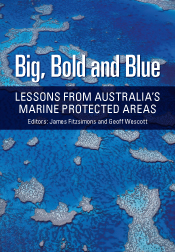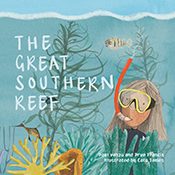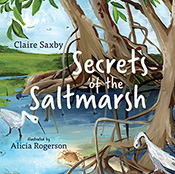Field Guide to the Seashores of South-Eastern Australia
By: Christine Porter, Ty G Matthews, Alecia Bellgrove, Geoff Wescott
A guide for beachgoers to the common plants and animals found on the seashores of this region.
The types of plants and animals that live on seashores in temperate regions are similar around the globe, but many of the individual species in south-eastern Australia are found only in this region. + Full description
Field Guide to the Seashores of South-Eastern Australia features colour photographs, descriptions and ecological notes for around 240 species of the more common plants and animals found on rocky, sandy and muddy shores along the coastline from Port Lincoln, South Australia, to the Hawkesbury River, New South Wales, and Tasmania.
This guide will allow beachgoers to learn interesting details about the plants and animals they come across, while also having sufficient scientific detail for natural history enthusiasts and biology students to develop their understanding of these shore ecosystems.
- Short descriptionReviews
"This book is an absolute delight. My only wish is that I had a copy of it earlier [...]. I highly recommend this book to anybody and anyone who is looking to learn more about Australia’s seashore species. A must have for the glovebox of a marine ecologist’s field trip vehicle, for the library at coastally located schools, and for the bookshelves of beach shacks across southeastern Australia, and beyond."
Nina Wootton, Transactions of the Royal Society of South Australia, August 2023
Details
Paperback | May 2023 | $ 39.99ISBN: 9781486315123 | 228 pages | 215 x 148 mm
Publisher: CSIRO Publishing
Colour photographs, Illustrations, Maps
ePDF | May 2023
ISBN: 9781486315130
Publisher: CSIRO Publishing
Available from eRetailers
ePUB | May 2023
ISBN: 9781486315147
Publisher: CSIRO Publishing
Available from eRetailers
Features
- Contains photographs, brief taxonomic notes, geographic range, morphology and ecology of around 240 common species of plants and animals.
- Where relevant, multiple images of species have been included to highlight within-species variation (e.g. in colour patterns) and/or to provide dorsal and ventral views.
- Provides a simple identification key to help readers find the specimen they are looking for or observing.
- Describes organisms that commonly wash ashore and the different types of egg clusters that people may encounter while visiting a local seashore.
- Features conservation of intertidal species and their habitats as a key theme.
- Expands on Wescott and Porter’s Life on the Rocky Shores of South-eastern Australia (VNPA, 2010) by including more species, a greater geographic range, more detailed species descriptions for the marine plants and a new section covering the species of sandy and muddy shores.
Contents
Preface and acknowledgementsStart here to get the most out of this guide
Introduction
Plants
Animals of rocky shores
Animals of sandy and muddy shores
Egg masses
All washed up: natural marine debris
Glossary
Further reading
Index of common names
Index of scientific names
View the full table of contents (PDF, 70 KB)
Authors
Dr Christine Porter has a PhD in environmental management from Deakin University. Christine has a long-held interest in the biology, ecology and conservation of marine invertebrates.
Dr Ty G. Matthews is a senior lecturer based at the Deakin University Queenscliff Marine Science Centre. Ty has 25 years of research and teaching experience associated with marine and freshwater ecosystems.
Dr Alecia Bellgrove is a Deakin University academic and leads the DeakinSeaweed Research Group at Warrnambool campus.
Dr Geoff Wescott is an Honorary Research Fellow at the University of Melbourne and Deakin University. He is also the co-editor of Big, Bold and Blue: Lessons from Australia's Marine Protected Areas.
For Teachers
We have created these Teacher Notes as a free PDF download to support the use of this book in the classroom.








